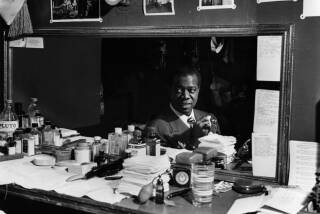An enterprising study of African American sound
- Share via
There were two pieces of good news at Southwest Chamber Music’s last concert of the summer Saturday at the Huntington Library in San Marino. Three, if you count the pleasantly cool evening.
One was the announcement that there will be lawn seating next summer -- which addresses the limited capacity of the porch where the concerts take place and might give them even more of an East Coast summer festival flavor. The other was the enterprising program, which illuminated very engaging string quartets by two composers who happen to be black before moving backward in time to a pair of prophets, Gershwin and Dvorak, who used African American influences.
Both William Grant Still and James Newton have strong connections with the jazz world: Still produced some groundbreaking arrangements for the Artie Shaw big band, while Newton remains one of the most creative jazz flutist-composers on the scene. Yet in the works at hand, each departed from jazz in his own way.
Still’s “Danzas de Panama” is, to put it succinctly, a lot of fun, the Panamanian flavor oozing from the catchy folk and dance tunes and the percussive knocking on the bodies of the instruments.
Newton’s “The Image of the Invisible” -- a substitute for his originally announced “Nelson Mandela Returns From Azania” -- deals with mysterious intangibles, the quiet, sustained clusters and tremolos and questioning violin line seeming to aim for a sense of the infinite.
Neither piece is typical of its composer, yet both made you want to explore more of their varied outputs.
Gershwin’s placid, gently syncopated “Lullaby for String Quartet” was a good follow-up to the Newton piece and lent itself well to the outdoor setting, although the performance by violinists Shalini Vijayan and Marisa McLeod, violist Jan Karlin and cellist Jakub Omsky could have been firmer in rhythm and direction.
The history lesson ended with Dvorak’s well-traveled “American” Quartet, with its quasi- African American-inspired themes providing links with the rest of the program and giving the audience something comfortably European as a point of reference. Although episodes of spotty intonation popped up throughout the performance, the rambunctious finale was the best-played.
More to Read
The biggest entertainment stories
Get our big stories about Hollywood, film, television, music, arts, culture and more right in your inbox as soon as they publish.
You may occasionally receive promotional content from the Los Angeles Times.










